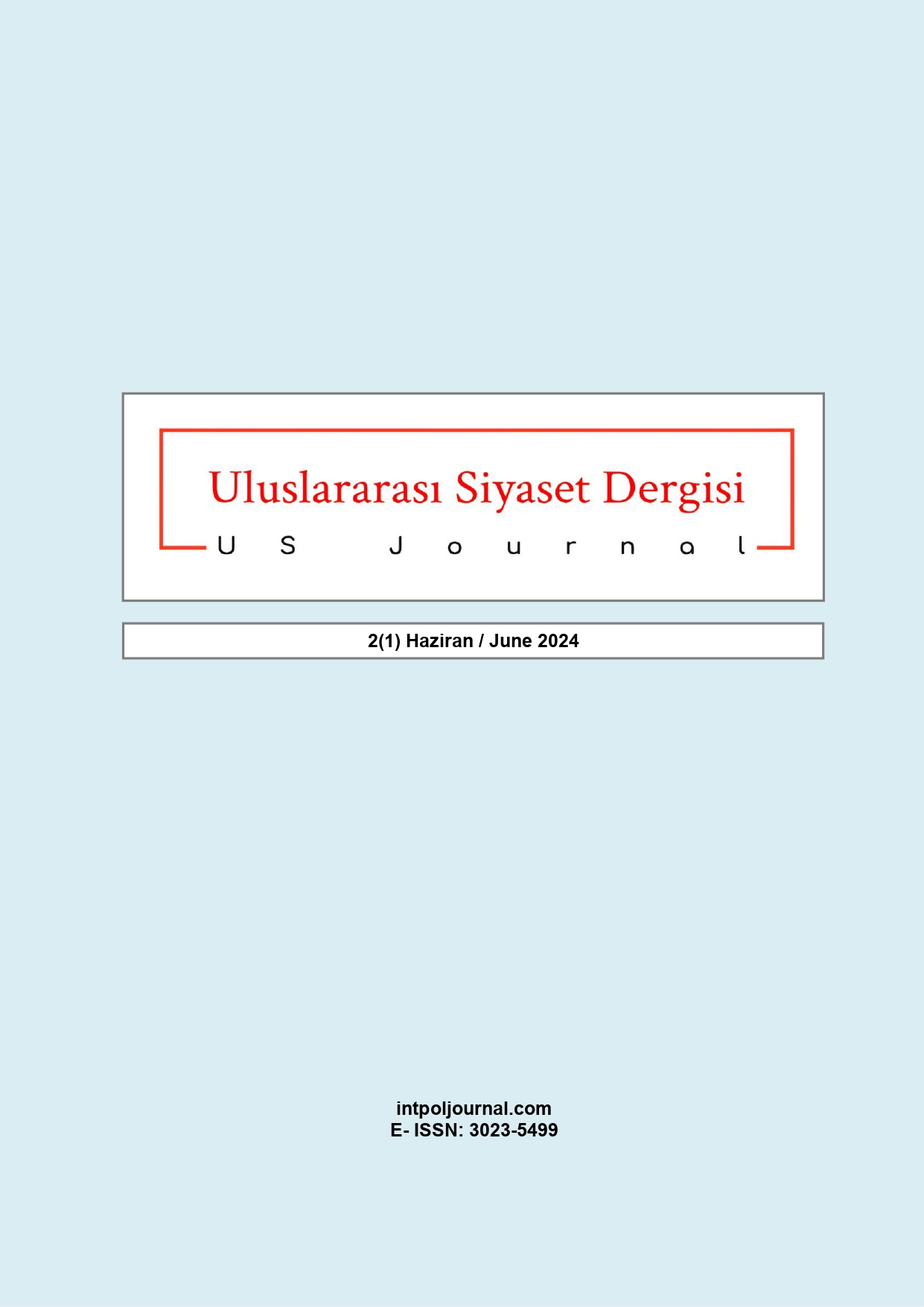Yemen Civil War in the Shadow of Proxy Wars: The Iran-Saudi Nexus
Keywords:
Yemen, Iran, Saudi Arabia, Houthis, Proxy warAbstract
The Arab Spring uprisings that began in Tunisia quickly spread to many countries in the region with social problems. One of these countries was Yemen. After 2009, Yemen, which had been unable to solve its problems since the 1962 coup d’état, was once again plunged into civil war. People were tired of the country’s problems for a long time and supported the uprising, thinking it would be a way out to resolve the conflicts as soon as possible. However, the civil war in Yemen was not limited to the Yemeni people. Saudi Arabia and Iran, the two strategic rival powers in the geography of the Middle East, took the political power struggle between them to Yemen and intervened indirectly in the internal politics of the country. This intervention put the concept of "proxy wars" on the agenda. Yemen is strategically located. The success of the Houthis, who control the Gulf of Aden, in controlling international trade has focused all eyes on the country. The hypothesis of this study is that Saudi Arabia and Iran are waging a proxy war in the Yemeni civil war by supporting some groups in the country. In order to test the hypothesis, the study sought to answer the following research questions What is the concept of proxy war? Why did Yemen become involved in a civil war? From which countries did the warring parties in the country receive external support? How did Iran and Saudi Arabia interpret developments in Yemen and which groups did they support? The study concludes that Saudi Arabia, which does not want Shia communities in the Middle East to gain position and strength, is supporting the government wing in Yemen for this purpose, while Iran wants to consolidate its regional position by supporting the Shia Houthis. In fact, Iran and Saudi Arabia intervened in the civil war in Yemen, which is an independent sovereign state, and intervened in the internal problem of the country through various groups.
References
Al-Mahfali, Mohammed .“Minorities in Yemen: Reality and Challenges”, INSAF Center for Defending Freedoms and Minorities Publications, no.1, (2019): 9.
Al-Tamimi Adep, Uddagatti Venkatesha. “Arab Spring in Yemen: Causes and Consequences”, Shodh Sarita An International Bilingual Peer Reviewed Refereed Research Journal 7, sayı 28, (2020): 59-63.
Arestizábal Pamela Urrutia, Ainhoa Ruiz Benedicto, Jordi Calvo Rufanges, and Karlos Castilla, “War in Yemen: Saudi Responsibility, European Complicity”, the Escola de Cultura de Pau, 2020. Erişim tarihi: 12.05.2024. https://www.idhc.org/arxius/recerca/1590570887-Informe_GuerraYemenIN.pdf.
Avcı, Sümeyra. “İran Dış Politikasında Şii Hilali”, İslam Medeniyeti Dergisi 8, sayı 50, (2022): 107-132.
Bob, Yonah Jeremy.“IDF admits Houthis Penetrated Eilat Missile Defense for the First Time”, The Jerusalem Post, 2024. Erişim tarihi: 01.05.2024 https://www.jpost.com/israel-hamas-war/article-792788,
Calawy, Samea. “The Proxy War in Yemen”, College of Law and Political Science 1, no, 7, (2020): 529-562.
CIA The World Factbook, “Yemen”. Erişim Tarihi: 04.02.2024. https://www.cia.gov/the-world-factbook/countries/yemen/.
Çelenk, Mehmet, Bayram Keklik. “Arap Baharı Dönemi Yemen Siyasetinde Mezhep Unsuru”, İLSAM Akademi Dergisi 3, sayı:1, (2023): 1-27.
Darwich, May. “The Saudi Intervention in Yemen: Struggling for Status”, Insight Turkey 20, sayı: 2, (2018): 125-141.
Deniz, Taşkın. “Arap Baharı ve Türkiye: Siyasi ve Coğrafya Açısından Bir Değerlendirme”, Doğu Coğrafya Dergisi 18, sayı 29, (2014): 65-78.
Devecioğlu, Kaan. “Küresel Ticareti Tehdit Eden Husiler Kim? Ne İstiyorlar?”, Ortadoğu Araştırmaları Merkezi, 2024. Erişim Tarihi: 20.03.2024. https://www.orsam.org.tr/tr/kuresel-ticareti-tehdit-eden-husiler-kim-ne-istiyorlar.
Dış Ekonomik İlişkiler Kurulu (DEİK), “Yemen Bilgi Notu”, 2022. Erişim arihi: 19.04.2024. https://www.deik.org.tr/uploads/yemen_bilgi-notu_-eylul-22.pdf.
Gün, Mehmet Salih. “Yemen’de Arap Baharı”, Yasama Dergisi 22, (2012): 121-140.
İzol, Ramazan, Murat Cingöz. “Iran-Saudi Arabia Rivalry and Yemen Crisis”, Gazi Akademik Bakış 16, sayı: 31, (2022): 345-360.
Karakır Aşkar, İrem. “Ongoing Conflict in Yemen: A Proxy War?”, TESAM Akademi Dergisi 5, sayı 2, (2018): 129.
Kurt, Veysel. “Arap İsyanları Sonrasında Ortadoğu’da Vekalet Savaşları: Yemen Örneği”, Uluslararası Siyaset Bilimi ve Kentsel Araştırmalar Dergisi 7, sayı 1, (2019): 307-326.
El Ghamari, Magdalena.“Jemen-the Proxy War”, Securitologia 22, sayı 2, (2015): 48-50.
Minority Rights Group, “Yemen”, 2019. Erişim Tarihi: 05.01.2024. https://minorityrights.org/country/yemen/.
O’Conner, Tom. “US Forces Say Houthi Attacks Threaten World Amid Hypersonic Missile Reports”, Newsweek, 2024. Erişim tarihi: 01.05.2024. https://www.newsweek.com/us-forces-say-houthi-attacks-threaten-world-amid-hypersonic-missile-reports-1880605.
Özdemir, Levent, Çağdaş Akif Kahraman, “Modern-Day Proxy Warfare: From Agency Theory Perspective”, Dumlupınar Üniversitesi Sosyal Bilimler Dergisi 78, (2023): 173-187.
Rugh, William A. “Problems in Yemen, Domestic and Foreing”, Middle East Policy Council 22, sayı: 4, (2015): 147-148.
Semin, Ali, “Yemen Krizinde Suudi Arabistan ve İran’ın Bölgesel Güç Mücadelesi”, Bilge Strateji Dergisi 9, sayı 17, (2017): 85-104.
Solmaz, Tarık. “Vekâlet Savaşlarında Yükselen Trend: Devlet Sponsorluğunda Olmayan Vekâlet Savaşı”, Diplomasi ve Strateji Dergisi 4, sayı 2, (2023): 147-189.
Tambağ, Emirhan, Belal Mansoor Ali Alfakıh. “Husiler: Grup Kimliği, Teşkilatları ve Sosyo-Kültürel Tutumları”, Journal of Islamic Civilization 8, sayı 49, (2022): 39-54.
The Embassy of The Kingdom of Saudi Arabia, “Saudi Arabia and the Yemen Conflict: Humanitarian Aid to the People of Yemen”. Erişim Tarihi: 15.05.2024. https://www.saudiembassy.net/sites/default/files/FactSheet_Humanitarian%20Aid%20Yemen%20Fact_April2017.pdf.
The UN Refugee Agency (UNHCR), “World Directory of Minorities and Indigenous Peoples-Yemen: Zaydi Shias”, 2018. Erişim Tarihi: 30.04.2024. https://www.refworld.org/reference/countryrep/mrgi/2018/en/64960.
Tınas, Murat. “Yemen İç Savaşı’nda Husiler: Vekalet İlişkisinin Karmaşık Yapısı”, Eskişehir Osmangazi Üniversitesi Sosyal Bilimler Dergisi 21, sayı 1, (2020): 117-136.
U.S. Department of State Office of the Geographer Department of State, “Saudi Arabia-Yemen Boundary”, 2001. Erişim Tarihi: 16.05.2024. https://hiu.state.gov/cartographic_guidance_bulletins/21-Saudi-Arabia-Yemen-2001.pdf.
Watts, Stephen, Bryan Frederick, Nathan Chandler, Mark Toukan, Christian Curriden, Erik E. Mueller, Edward Geist, Ariane M. Tabatabai, Sara Plana, Brandon Corbin, and Jeffrey Martini. Proxy Warfare in Strategic Competition: State Motivations and Future Trends. California: RAND Corporation, 2023.
“Rusya: Husiler Hipersonik Füzeye Sahip”, Mepa News, 2024. Erişim tarihi: 02.05.2024. https://www.mepanews.com/rusya-husiler-hipersonik-fuzeye-sahip-65520h.htm.
“Yemen People Stats”, Naiton Master. Erişim Tarihi: 14.04.2024. https://www.nationmaster.com/country-info/profiles/Yemen/People" l "2011" .
Downloads
Published
How to Cite
Issue
Section
License
Copyright (c) 2024 US Journal

This work is licensed under a Creative Commons Attribution-NonCommercial-ShareAlike 4.0 International License.
https://creativecommons.org/licenses/by-nc-sa/4.0/legalcode.en



